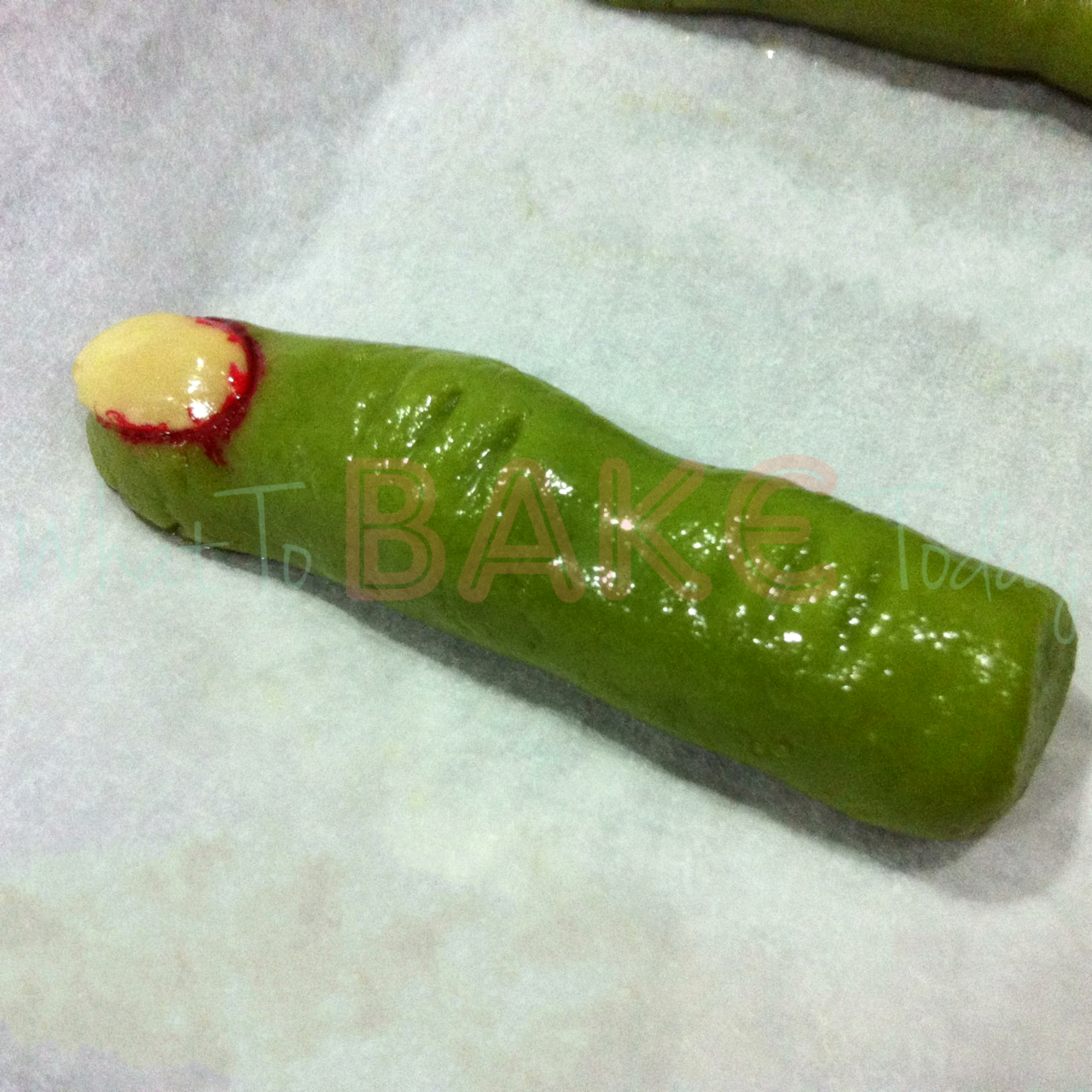Since last week's play on shaping Matcha Sablés into fingers (and successfully creeping out a few friends XD), I having been thinking about transforming other desserts into Halloween worthy treats. I want them to look as "real" as possible or at least able to spook myself, if not what's the point right?
A friend from a baking forum suggested I should make eyeballs. Right. How can I miss them, they are the essentials of the Halloween spirit, isn't it?! In fact, I have been thinking about them for a long time and had wanted to attempt eyeballs before the sablés but I just didn't have any inspiration and couldn't conceptualize any ideas!! Had to put it on hold and focus on the fingers first.
I tried googling for Halloween eyeballs ideas; almost all of them are cookies recipes, with a few appetizers like deviled eggs around. Not that a cookie recipe isn't good enough for me, but I want the visual, the texture and the whole concept to be as close to reality (or my perceived reality for that matter) as I can get it to be.
Almost inevitably, the best medium (in my opinion) to use for this concept has to be jellies; the wobbly texture and the thin film of water on its surface resembles that of a real eyeball. I opt for Strawberry Coulis as the "blood" and made it slides off the sides of the eyeballs so it kinda resembles the flesh tissue inside of our eye sockets. This might not be very well done, but with the time constraint, I've put in my best effort for this creation!! Hopes everyone likes them. ^_^
Strawberry Coulis
150g Strawberries, washed and hulled
50g Water
50g Sugar
2. Purée the mixture in a food processor and have it pass through a sieve. Use a fork or spoon to help push the mixture through. This is to remove the seeds and ensure that the coulis is smoooth~
And the coulis is done. Mine is a very simple version. There are other recipes which includes lemon juice, alcohol, whatever. You may add if you like or you can even increase the amount of sugar if you find the strawberries too sour (the ones we get in SG can get really sour at times).
 Halloween Jelly Eyeballs
Halloween Jelly Eyeballs1 packet of Almond Jelly
1 packet of Guiling Grass Jelly
1 spherical ice-cube tray
1. Prepare the Guiling Grass Jelly as per instructions on the back of packaging.
2. Using a dropper or a spoon, carefully place a few drops in the ice-cube tray. Take note that they solidify quite fast. Place into chiller for it to set slightly.
3. Prepare the Almond Jelly as per instructions on the back of the box.
4. Check that the Guiling Grass Jelly is set. Use a toothpick and prick each "iris" a few times. Fill the ice-cube tray with the Almond Jelly carefully. It takes a little time to fill completely, just slow down and wait till the liquid does not subside any more.
5. Place in the chiller for 2-3 hours till set.
All blog posts and photos are properties of WhatToBakeToday (unless otherwise stated). Unauthorized use and/or duplication of these contents, whole or part thereof, without express or written permission from this blog's author is strictly prohibited. Excerpts and links may be used, provided that full and clear credit is given to WhatToBakeToday with appropriate and specific direction to the original content.







































